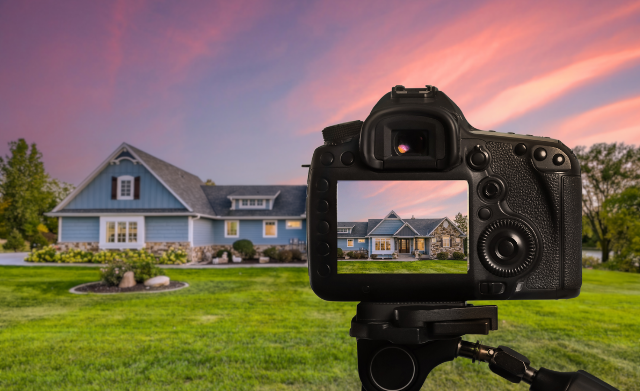In the competitive world of real estate, where first impressions are crucial, the visual appeal of a property can make all the difference. Real estate photography has become an indispensable tool for agents, homeowners, and developers aiming to present properties in the best possible light. This blog explores the importance of real estate photography, the key elements that make a property stand out, and how professional imagery can enhance property listings.
The Importance of Real Estate Photography
The real estate market is highly visual, with potential buyers and renters often making decisions based on the first few images they see. High-quality photography not only grabs attention but also builds an emotional connection with the viewer. Here’s why Real Estate Photography is essential:
- First Impressions Matter: Studies show that potential buyers spend just a few seconds looking at online listings before deciding whether to explore further. A property’s visual presentation can either invite viewers in or turn them away.
- Enhances Online Listings: With the majority of property searches beginning online, having professional photos can significantly increase the chances of your listing being viewed and shared.
- Reflects Professionalism: High-quality images convey a sense of professionalism and attention to detail, which can enhance an agent’s reputation and build trust with clients.
- Maximizes Property Value: Professional photography can highlight the best features of a property, making it appear more desirable and potentially increasing its market value.
Key Elements of Effective Real Estate Photography
To truly capture the essence of a property, several key elements must be considered in real estate photography:
- Lighting: Proper lighting is crucial in photography, and real estate is no exception. Natural light is often the best choice, as it creates a warm and inviting atmosphere. Photographers may also use additional lighting equipment to ensure even exposure and eliminate harsh shadows.
- Composition: The way a photo is composed can significantly impact how a space is perceived. Wide-angle lenses are often used in real estate photography to capture more of the room in a single shot, making spaces appear larger and more open. Additionally, photographers focus on framing shots to highlight key features, such as large windows, open floor plans, or unique architectural details.
- Staging: Proper staging can enhance the appeal of a property by making it look lived-in and attractive. This might involve arranging furniture, adding decorative elements, or decluttering spaces to create a clean and welcoming environment. Staging helps potential buyers envision themselves living in the space.
- Editing: Post-processing is an essential step in real estate photography. Editing can correct issues like poor lighting, color imbalances, or unwanted objects in the frame. It can also enhance the overall look of the photos by adjusting contrast, brightness, and sharpness, ensuring that the final images are polished and professional.
The Impact of Professional Photography on Property Listings
The quality of the images used in a property listing can directly influence its success in the market. Here’s how professional photography impacts property listings:
- Increased Interest and Engagement: Listings with high-quality photos are more likely to attract attention and generate interest. Buyers are more inclined to click on listings that feature well-composed, vibrant images, leading to higher engagement rates.
- Faster Sales: Properties with professional photography tend to sell faster. This is because compelling images create a sense of urgency and desirability, encouraging potential buyers to take action more quickly.
- Higher Selling Prices: Studies have shown that properties with professional photos often sell at higher prices. The perceived value of a property increases when it is presented with high-quality imagery, which can justify a higher asking price.
- Better Online Visibility: Real estate websites and social media platforms favor listings with visually appealing content. Professional photos are more likely to be featured, shared, and promoted, giving the listing better online visibility.
Choosing the Right Photographer for Real Estate
Not all photographers specialize in real estate, so it’s essential to choose one with experience and expertise in this field. Here are some tips for selecting the right real estate photographer:
- Portfolio Review: Always review a photographer’s portfolio to assess their style, quality, and experience in real estate photography. Look for consistency in lighting, composition, and editing.
- Understanding of Real Estate Market: A good real estate photographer understands the market and knows what buyers are looking for. They should be able to highlight the features that are most important to potential buyers and understand how to make a property stand out.
- Technical Skills: Real estate photography requires specific technical skills, such as the ability to work with different types of lighting and use wide-angle lenses effectively. Ensure the photographer is proficient in these areas.
- Communication and Collaboration: The best results come from collaboration between the photographer and the agent or homeowner. Choose a photographer who is willing to listen to your needs, offer suggestions, and work with you to achieve the desired outcome.
Conclusion
In today’s real estate market, where competition is fierce and first impressions are critical, professional photography is more important than ever. High-quality images not only capture the attention of potential buyers but also create an emotional connection, making properties more appealing and easier to sell. By investing in professional real estate photography, agents and homeowners can enhance their property listings, attract more interest, and achieve better results in the market. Whether you’re selling a cozy apartment or a luxurious estate, the right photography can make all the difference in showcasing your property at its best.




